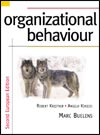 |
1 |  | 
Espoused values represent the values and norms that actually are exhibited by employees. |
|  | A) | True |
|  | B) | False |
 |
 |
2 |  | 
In a constructive organizational culture employees are encouraged to interact with other employees and to work on tasks and projects in ways that will assist them in satisfying their needs to grow and develop. |
|  | A) | True |
|  | B) | False |
 |
 |
3 |  | 
___________ is (are) the set of shared, taken-for–granted implicit assumptions that a group holds that determines how it perceives, thinks about, and reacts to its various environments. |
|  | A) | Normative beliefs |
|  | B) | Vision |
|  | C) | Culture |
|  | D) | Values |
|  | E) | Realistic job previews |
 |
 |
4 |  | 
__________ values are values and norms that actually are exhibited in employees’ behaviour. |
|  | A) | Equitable |
|  | B) | Collegial |
|  | C) | Enacted |
|  | D) | Egalitarian |
|  | E) | Espoused |
 |
 |
5 |  | 
The meritocratic value system is based on the ____________ reward norm and ____________ power structure. |
|  | A) | equitable; decentralised |
|  | B) | egalitarian; centralised |
|  | C) | equitable; centralised |
|  | D) | egalitarian; decentralised |
|  | E) | egalitarian; equal |
 |
 |
6 |  | 
_____________ represent(s) an individual’s thoughts and beliefs about how members of a particular group or organization are expected to approach their work and interact with others. |
|  | A) | Normative beliefs |
|  | B) | Organizational culture |
|  | C) | Vision |
|  | D) | Values |
|  | E) | Ethics |
 |
 |
7 |  | 
A frequent cause of failed mergers is |
|  | A) | lack of financial resources. |
|  | B) | weak cultures. |
|  | C) | lack of managerial talent. |
|  | D) | incompatible cultures. |
|  | E) | that the culture and strategy don’t match. |
 |
 |
8 |  | 
According to the ___________ perspective, an organization’s culture must align with its business or strategic context. |
|  | A) | strength |
|  | B) | effectiveness |
|  | C) | fit |
|  | D) | modification |
|  | E) | adaptive |
 |
 |
9 |  | 
According to the ___________ perspective, good cultures help organizations anticipate and adjust to environmental change. |
|  | A) | strength |
|  | B) | effectiveness |
|  | C) | fit |
|  | D) | modification |
|  | E) | adaptive |
 |
 |
10 |  | 
Which of the following is the correct sequence of stages in the organizational socialization process? |
|  | A) | Change and acquisition, anticipatory socialization, encounter. |
|  | B) | Encounter, change and acquisition, anticipatory socialization. |
|  | C) | Encounter, anticipatory socialization, change and acquisition. |
|  | D) | Anticipatory socialization, change and acquisition, change. |
|  | E) | Anticipatory socialization, encounter, change and acquisition. |
 |
 |
11 |  | 
Realistic job previews serve to |
|  | A) | reduce turnover. |
|  | B) | increase performance. |
|  | C) | decrease absenteeism. |
|  | D) | improve job satisfaction. |
|  | E) | increase organizational commitment. |
 |
 |
12 |  | 
Reality shock is likely to occur during which phase of the organizational socialization process? |
|  | A) | Change and acquisition. |
|  | B) | Initiation. |
|  | C) | Redefinition. |
|  | D) | Encounter. |
|  | E) | Anticipatory socialization. |
 |
 |
13 |  | 
______________ is (are) defined as the process of forming and maintaining an intensive and lasting developmental relationship between a senior person and a junior person. |
|  | A) | Socialization |
|  | B) | Organizational culture |
|  | C) | Normative beliefs |
|  | D) | Espoused values |
|  | E) | Mentoring |
 |
 |
14 |  | 
Which of the following is a psychosocial function of mentoring? |
|  | A) | Sponsorship. |
|  | B) | Exposure and visibility. |
|  | C) | Role modelling. |
|  | D) | Coaching. |
|  | E) | Protection. |
 |
 |
15 |  | 
Which of the following is true according to the research on mentoring? |
|  | A) | Formal and informal mentoring relationships are equally effective. |
|  | B) | Females should avoid male mentors. |
|  | C) | The typical mentoring relationship lasts an average of three years. |
|  | D) | Individuals who received extensive mentoring had higher incomes. |
|  | E) | Mentoring had no relationship to job satisfaction. |
 |




 2002 A McGraw-Hill Online Learning Centre
2002 A McGraw-Hill Online Learning Centre